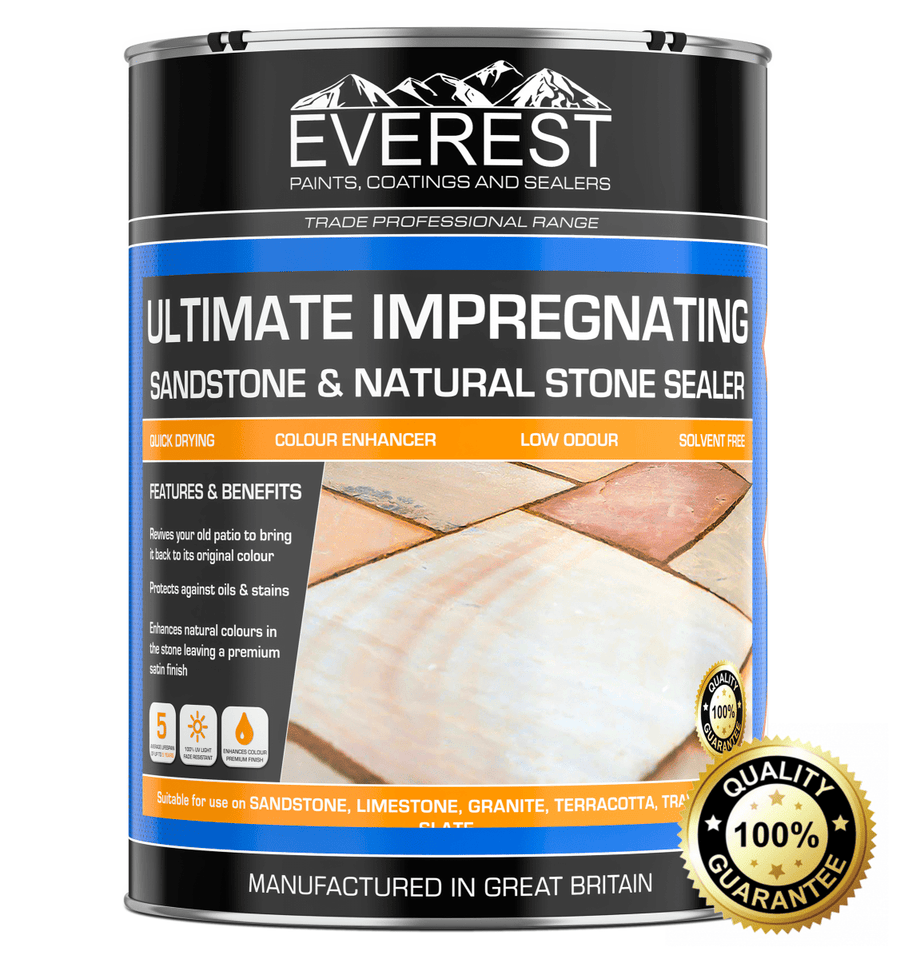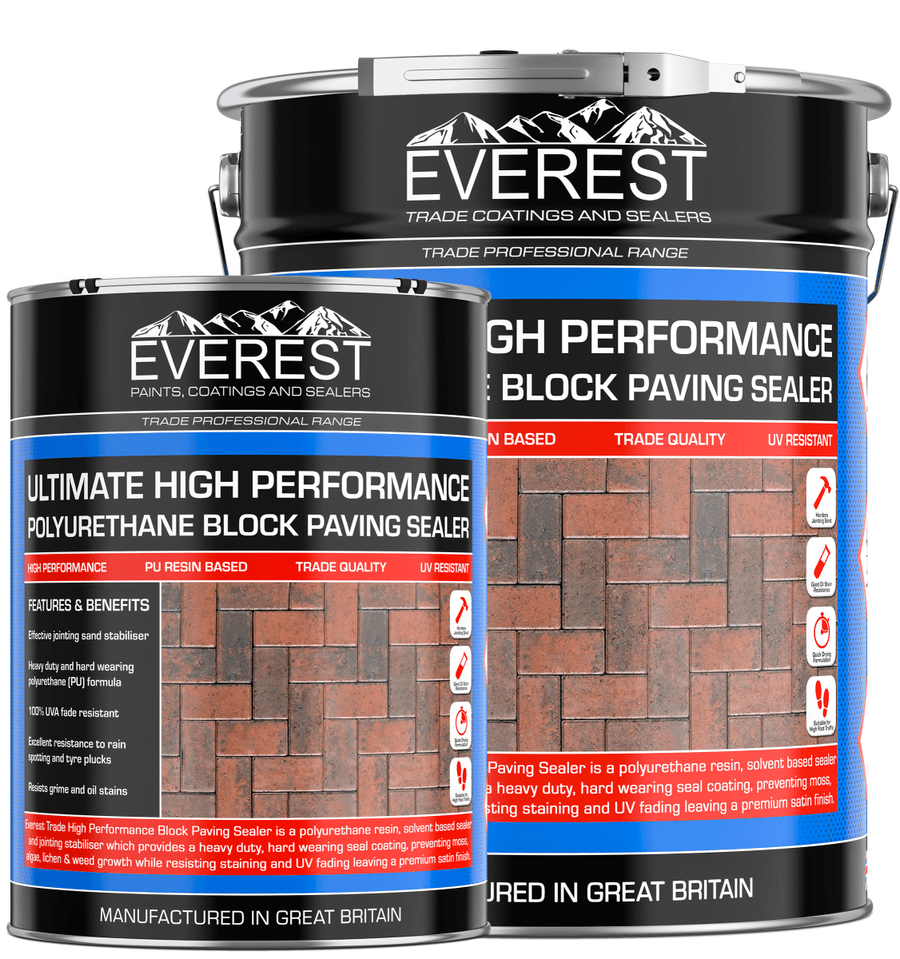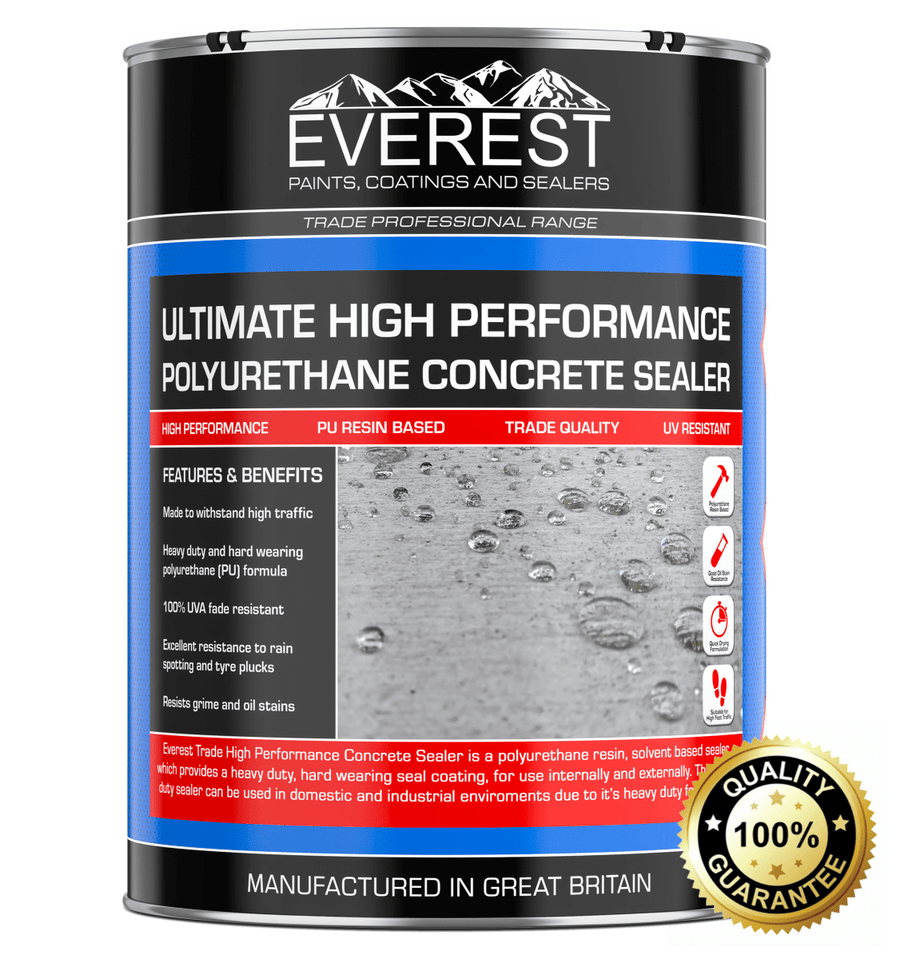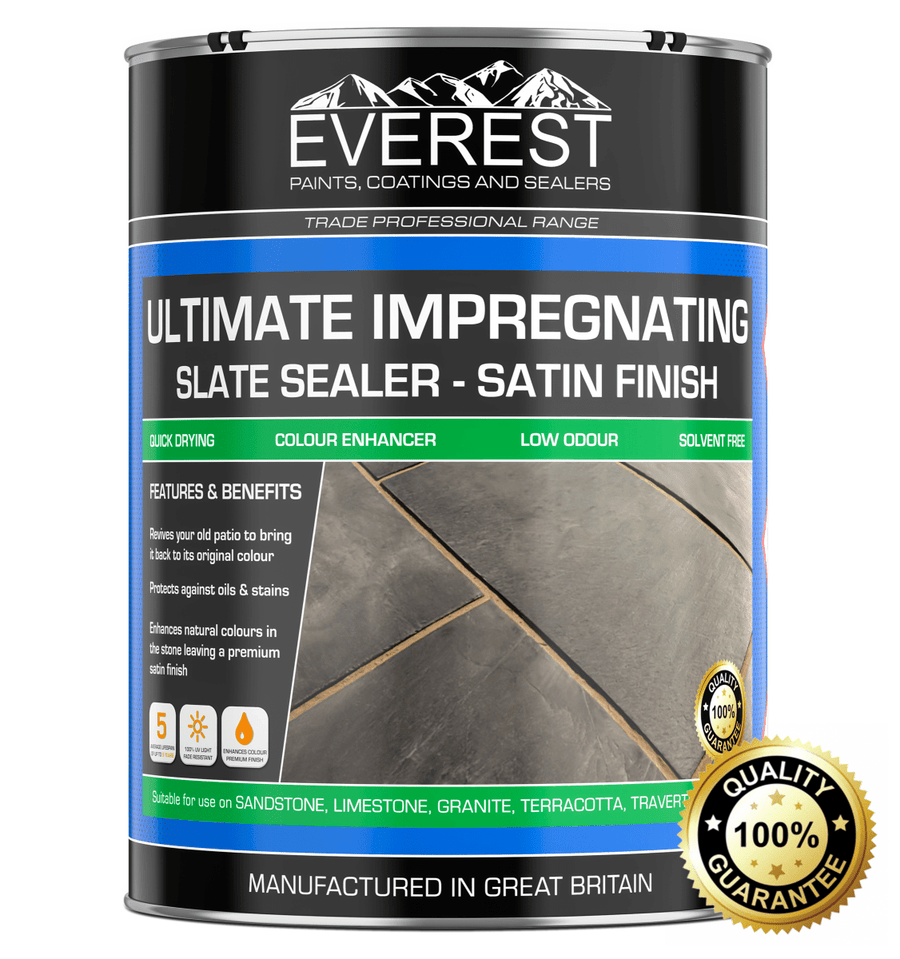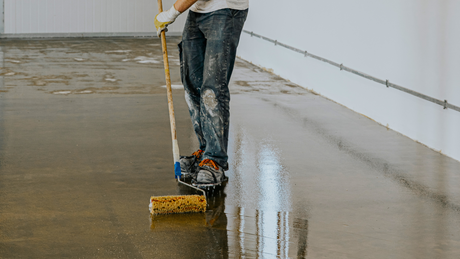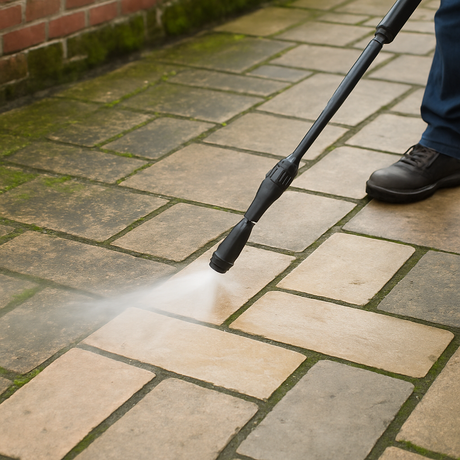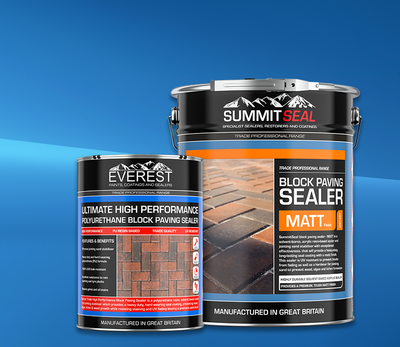How Long Does Patio Sealer Last?
Whether you’re refreshing patio slabs, block paving, or natural stone, sealing is the key to protecting against rain, frost, algae, and stains. But once it’s applied, how long does patio sealer really last in UK conditions? Let’s break it down by sealer type, surface, and maintenance so you know what to expect.
Firstly, is a patio sealer even needed?
When completing any home improvement project, you will often encounter suggested steps that aren’t necessary. So, the first question to ask is whether the patio paint sealer is actually needed.
Short answer: absolutely.
Patio sealers provide a protective barrier that keeps your patio safe from weathering, moisture, and potential stains. It additionally gives the patio a superior finish, which;
- Enhances colour and finish (natural, satin, silk or wet look).
- Protects against moisture and frost damage.
- Helps prevent weeds and algae from taking root.
- Makes patios easier to clean and maintain.
- Extends the lifespan of the paving itself.
In other words, overlooking this part of the project may seriously harm the look and function of your patio. The immediate and long-term condition of your outdoor recreational space will heavily rely on the sealant.
How long does patio paint sealer last?
In UK conditions, patio sealers generally last between 2 and 5 years, but the exact figure depends heavily on the type of sealer, the surface it’s applied to, and how well it’s maintained. Think of sealing as a cycle: apply, protect, maintain, then refresh when the signs of wear appear. Here’s a deeper look at what to expect:
| Sealer Type | Typical Lifespan* | Best For |
|---|---|---|
| Water-based acrylic (with silane additive) | 2–3 years before reapplication. Touch dry in 3–4 hours, binder cured in 1 day, with maximum hydrophobic performance building over ~7 days. | Concrete slabs, sandstone, limestone, slate, granite and block paving where quick drying, low odour, and breathable protection are priorities. |
| PU 1K (polyurethane) | 3–5 years. Creates a tougher film that withstands heavy use and slows colour fade, especially on block paving and concrete. | High-traffic patios, block paving driveways, and areas needing superior chemical and abrasion resistance. |
| Solvent-based acrylic | 2–4 years. Strong colour enrichment and wet-look, but requires proper prep to avoid clouding and whitening over time. | Imprinted concrete, decorative block paving, and customers wanting bold colour enhancement. |
*Lifespan assumes correct preparation, application, and UK weather conditions (10–20 °C, dry).
Why brand matters for lifespan
Not all sealers are created equal. A budget patio sealer may only give you a year or two before it starts breaking down, forcing you to reseal far sooner. Premium ranges such as our Everest and SummitSeal sealers are formulated with higher-grade resins, silane additives, and UV stabilisers. That means:
- Stronger adhesion: better grip to stone, concrete, and block paving.
- Superior hydrophobicity: water-beading lasts longer, keeping surfaces cleaner.
- UV stability: colour stays richer without yellowing or chalking.
- Extended protection: longer intervals between resealing, saving time and money.
So while a cheap product might need refreshing every 18 months, investing in a high-performance sealer often stretches that out to 3–5 years depending on use and surface type.
Other factors affecting lifespan
- Surface type: Porous materials like sandstone and block paving absorb more sealer, but may also weather faster in exposed areas compared to denser materials like limestone or concrete slabs.
- Weather conditions: Constant rainfall, frost, or prolonged UV exposure can shorten the lifespan. A north-facing shaded patio may struggle with algae sooner, while a south-facing patio may see UV fading earlier.
- Foot traffic and usage: A quiet garden patio sealed with PU might last 5 years, while a busy driveway with block paving may need resealing closer to 2–3 years.
- Preparation & application: Poorly cleaned surfaces, damp substrates, or applying too thick can all reduce durability and cause early failures like whitening, peeling or patchiness.
- Maintenance: Regular sweeping, prompt cleaning of oil and food spills, and weed control around joints will all help extend the life of the sealer.
As a rule of thumb, water-based acrylics should be refreshed every 2–3 years, solvent acrylics every 2–4 years, and PU 1K every 3–5 years. Resealing doesn’t mean stripping back to bare stone each time – in many cases, a simple top-up coat is enough to restore protection and refresh the finish.
How to support the longevity of your patio sealer
Even the best patio sealer won’t last its full potential if it’s not applied and cared for correctly. To stretch protection closer to the 3–5 year mark, it’s important to combine thorough preparation, correct application, and simple ongoing maintenance. Here’s how to maximise the life of your sealer:
- Prep thoroughly: Always start with a clean base. Use a patio cleaner or efflorescence remover to strip algae, salts, and ingrained dirt. If oil marks are present, treat with a dedicated oil stain remover before sealing.
- Ensure it’s dry: Moisture is the #1 cause of whitening and poor adhesion. The patio must be bone dry before application and should stay dry for at least 24 hours afterwards. Block paving joints in particular need extra drying time.
- Apply thin coats: Two light coats always outperform one heavy one. Thin coats penetrate and bind properly, reducing the risk of puddling, patchiness, and slipperiness.
- Respect curing times: Touch dry ≠ fully cured. While water-based acrylics may feel dry in 3–4 hours, they need around 24 hours to cure, and up to 7 days to reach maximum hydrophobic performance.
- Maintain regularly: Sweep grit, rinse spills promptly, and keep joints weed-free so the surface doesn’t break apart. For patios under trees, rinse periodically to stop algae growth.
- Top up when needed: Don’t wait for total failure. If water stops beading or colour looks duller, a quick top-up coat restores protection before damage sets in.
When is it time to reseal?
Signs it’s time for a fresh coat include:
- Water no longer beads after rainfall.
- Colour fading or patchiness compared to previously sealed areas.
- Algae, moss, or weeds start appearing more quickly.
- Oil stains soak in rather than staying on the surface.
Most patios need resealing every 2–3 years (water-based acrylic) or 3–5 years (PU 1K). Solvent acrylics generally sit in between. Following the same prep and application steps ensures lasting results.


